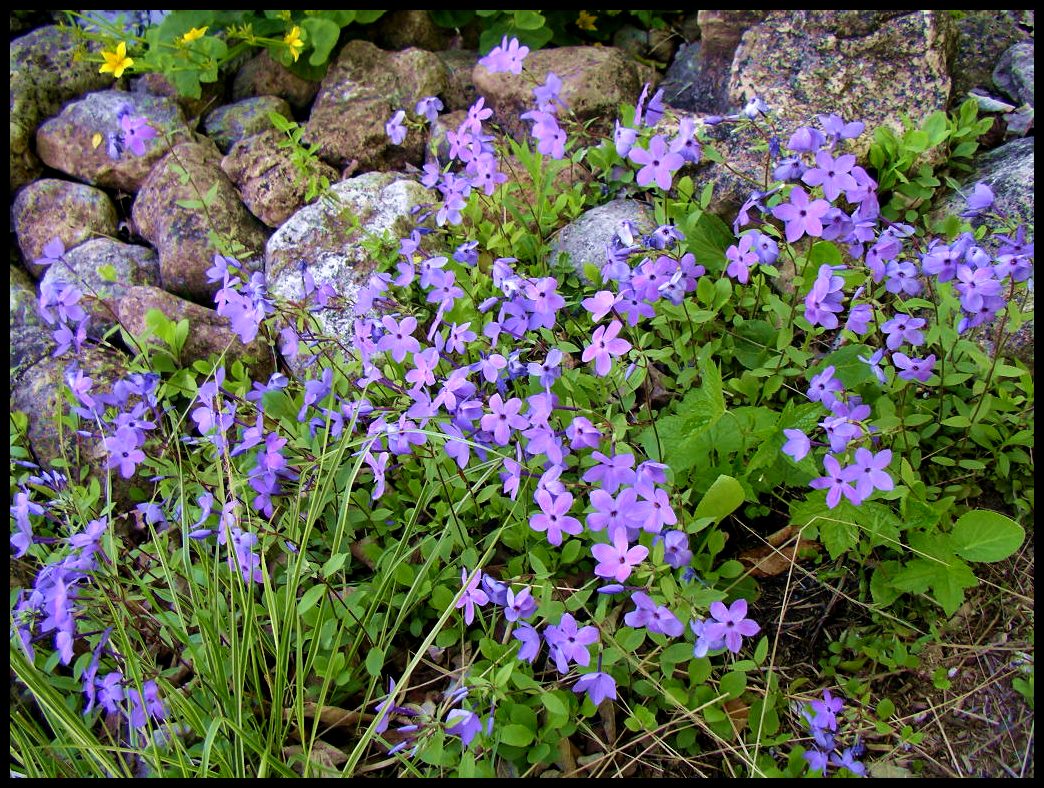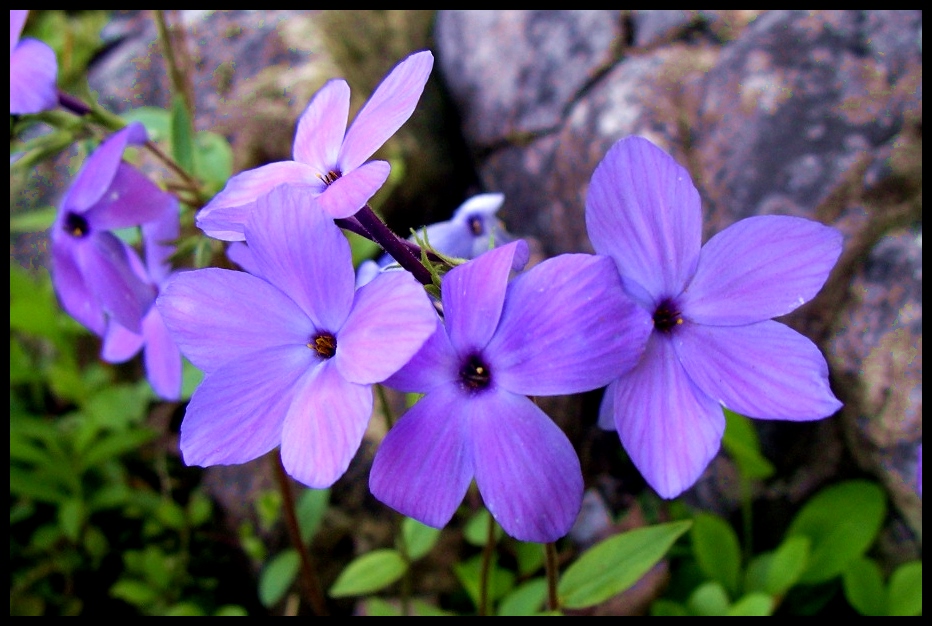Plant of the Month for April, 2013

Phlox stolonifera
(floks sto-lon-IF-er-ah)
General Information:
Phlox are well known as rock garden plants and sunny border plants, but few people are familiar with Phlox stolonifera, a North American native that is ideal for the shady garden. It was voted Perennial Plant of the Year in 1990 by the Perennial Plant Association.

Phlox stolonifera; photo by Robert Pavlis
P. stolonifera, also called creeping phlox, is a vigorous mat-forming ground cover that flowers on short stems in mid spring. The highly fragrant flowers can be lavender-blue, violet, pink and even white. Because of its low stature it works well growing under and around other taller plants and is not usually bothered by deer or rabbits.
Creeping phlox prefers part shade and a fair amount of moisture but will grow just fine in the dry shade under maples where it will spread a bit slower. Its name comes from the fact that it makes stolons which are ground hugging stems that root as they go.

Phlox stolonifera; photo by Robert Pavlis
P. stolonifera can be distinguished from a similar woodland phlox called P. divaricata by the fact that it’s petals are not notched as in P. divaricata. P. divaricata is also a bit taller and does not spread as quickly by stolons.
Life Cycle: perennial
Height: flower are 20 cm (8 in), leaves are 8 cm (3 in)
Bloom Time: mid spring
Natural Range: Eastern North America and north into Quebec
Habitat: open woods and wooded stream banks
Synonyms:none.
Cultivation:
Light: part shade to full shade
Soil: humus rich moist soil is prefered, but not too fussy
Water: average moisture, can take drought
USDA Hardiness Zone: 4 (3?) - 8
Propagation: seed, cuttings, division
Seedex availability (ORG&HPS annual Seed Exchange): rarely
